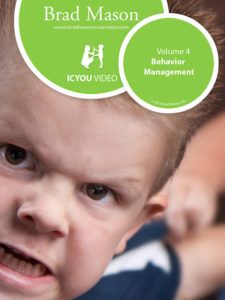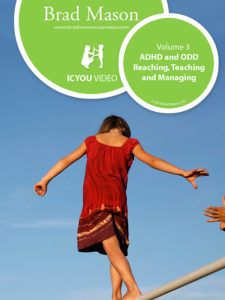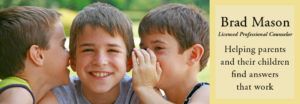ADHD Child, Why is it never their fault?
Metacognition, ADHD Child
Why is it never their fault?
I didn’t do it. It wasn’t me. It was because so and so did such and such to me. My childhood ADHD made me do it. One parent said their kid tripped going up the stairs and yelled down at the parent blaming the parent for it. Why can’t they admit to their errors?
Sometimes it’s not just denial. Some people, and often the ADHD child who says it’s never their fault, have poorly developed metacognition, or the ability to think about what you are thinking about. Such a person will have difficulty noticing when they are daydreaming, and difficulty reading a context and behaving in a way that fits.
Everyday problem solving will also be affected- trouble noticing your strategy is not working and trying a new one. Noticing errors in your work or whether a job is truly finished or not is also part of metacognition- without out it there is no insight. This is common with ADHD in children. If this was your spouse it would be like being married to someone for whom it was never their fault, always yours, and apologies never get issued- only blame.
An article in the Sept/Oct 2014 edition of Scientific American Mind says that metacognition, or insight into your own thoughts, is the ability to make judgements about your own thoughts, such as is this memory accurate or is my decision appropriate. When a person with a disorder is unaware of his or her impairments, they are said to have anosognosia, and may be unaware of their dementia or disability, their lack of ability to remember or drive a car or need to take medication. Traditionally these people have been viewed as being in denial.
So what can we do? Some medications like Ritalin appear to help. Electrical brain stimulation of the frontal lobe looks promising, but I wouldn’t try this at home. Some studies of meditation appear promising in terms of enhancing subjects awareness of their accuracy on a memory test. In the classroom asking students to reflect on how well they had done after a break improved self-awareness, and greater accuracy in insight was triggered by having the subjects identify their own keywords- a few words generated to summarize a topic learned.
Searching for more ways to help an ADHD child improve metacognition? I went to the text Smart but Scattered, (Dawson & Guare 2009) and here’s what I found.
Give specific praise for important elements done as part of a task.
Have them evaluate how they did- How do you think you did? I like the way you got the dirty clothes off your floor. Did you look under the bed?
Have them identify what finished looks like.
Teach questions they can ask themselves. How am I going to do this? Am I following my plan? How did I do?
To help them evaluate their behavior in social settings and adapt in appropriate ways:
Play guessing games to guess facial expressions and body language. Let the kid make faces for you too.
Do the same with voice tones.
Teach clues to how a person is feeling even when they are hiding their feelings. I like to teach poker in social skills groups and teach how to bluff and read a bluff. Empty your loose change bucket and use some real money to make it interesting.
Ask them to guess how their actions will impact others.
Oppositional-defiant behavior can result when an ADHD child feels that adults only notice what they do wrong. You can not win a power struggle with a child who is being ODD, they win every time by not doing. And you can’t make them. And they don’t care what you are taking away from them. The smart approach to this type of behavior is to get control over the things this kid enjoys, and sell them the time with what they like based on how well they do at meeting adult expectations. Then you don’t get the explosions when you punish and take things away, you wait and encourage them to do well so you can celebrate their success with them by sharing some of what they want from you. This also allows you to keep your interaction positive instead of negative and draining.
Video preview: click here!
By the way, to definitely sharpen your skills at managing behavior, especially oppositional and defiant behavior in an ADHD child, sign up for the free mini-course Behavior Management Tips and Tools Giveaway to get videos, forms, and instructions in five easy to digest email installments, click here.
Thinking Skills- Cognitive Therapy for ADHD Child
Sometimes we get so focused on behavior that we forget to help people with the unseen action that precedes all behavior- thought. I was working with a group of boys on social skills recently and instructing them on how to keep their head in the game. This means that when it is not your turn, you still work at being part of the group and staying in the game in several ways.
What are you supposed to be doing with your brain? You are expected to think with your eyes, watch the other players, consider the strategy of your next move, adjust your strategy to unexpected changes, plan your next move, and monitor the course of play so that when it is your turn, you recognize that the person who just went before you signals that it is your turn. You have a plan and you take your turn without delay so the other players don’t get bored by waiting.
Many children with distractability issues and difficulty with the cognitive flexibility required to think about others lack the awareness of these hidden rules about underlying thinking skills-what you are supposed to do with your mental activity. On the surface we see a child who is often unaware that it is their turn, they have to be prompted, verbally sucked back in to the group and the game when it is their turn. What were they thinking about? Where were they? Did they leave the game and the group of people they were supposed to be with?
While coaching one bright seven-year-old group participant in these thinking skills, he remarked. “Oh, I didn’t know that!” When it wasn’t his turn, he checked out, unless verbally reminded and put on the spot, his mind went somewhere else. He had to be prompted every time it was his turn, even though his body was right there with the rest of us. How can we tell when someone’s mind leaves the group? Watching the eyes often gives us a clue. When we see their eyes are not watching the game and the other players, we have a clue that they are not performing the mental activity necessary to keep them in the game and with the rest of us.
When we see their eyes drift away, we can remind them to watch the other players, to think with their eyes, to plan their next move, to be watching for the clues that signal it is their turn, maintaining the flow and excitement of the game that helps keep everyone a part of the shared activity. “Are you paying attention? Are you watching? Are you listening?” These are examples of statements that do not give specific instruction about what they need to be doing with their brain, do not coach the required thinking skills to be an effective group participant.
The ADHD child is always listening. To something. The air conditioner, the lawnmower outside, the voice in their daydream. They need to listen with their brains, not just the ears, by thinking about what people are saying.
Likewise, there are thinking skills that can be taught to support such behaviors as shifting sets, which means stopping what you are doing and starting something new during transition times, like turning off the game to come to dinner. Kids who lack the flexible thinking skills to change sets will often object “No!” or appear to ignore verbal prompts, often because they simply lack the thinking skills to change, let go, adapt, be flexible. They may seem unmotivated to please others, but usually kids really want to do well and respond successfully.
Another example of a thinking skill is the ability to recognize and manage an emotional response. We can readily identify the surface behavior we want, such as being mad without throwing things, hurting people, or self injurious behavior. But what are the thinking skills a child needs to notice, communicate, and manage feelings in acceptable ways? These are teachable, and I propose that if we focus solely on surface behaviors, “what” and “do this” and “don’t do that,” we are missing valuable teachable moments about “how,” providing them instruction in how to use their brain.
Perspective taking, theory of mind, or thinking about others and modifying your behavior so they have good thoughts about you is another category of thinking skills that we often fall short of properly teaching. High functioning children in the autism spectrum often also need to be taught “Why?” Why is it important to me how others think about me?
We can also augment cognitive therapy with behavioral therapy, finding incentives to support children in developing successful behavior patterns. Sometimes explaining how and why is not enough. Because many children with distractibility issues also have deficits in inhibition (impulsivity) as well as working memory, they may fail to employ successful strategies because they forget in the moment. We can also use external, visual cues to help ADHD children organize their behavior.
Lori Copeland published a book, Hunter and His Amazing Remote Control, using the concrete example of a remote control to help control your brain. It has templates for a mock remote control with buttons that control executive functions. “Pause” enables you to stop and think before acting or speaking. “Fast Forward” enables you to predict the outcome of your choices. “Slow Motion” helps you slow down and pay attention to details. “Zapper” enables you to eliminate negative and discouraging thoughts. “Coach” button deploys positive self-image building statements like “keep trying, you can do it.” The channel changer reminds you to keep your channel on the speaker and notice when you accidently changed channels and shifted your attention to non-salient details or daydreaming.
The remote control is an example of an ADHD child kid-friendly external support and reminder to help them organize what we don’t see, their cognitive operations that precede and underlie the surface behavior that we can see. You can also employ a good therapist, who has already trained in and practiced these strategies with many children exhibiting the same difficulties, as a short-cut to getting the solutions you want.
Brad Mason LPC, LPA, LSSP
Start learning the hidden processes that underlie observable problems in behavior for the ADHD child so you can intervene in success for ways. Give them a better shot at overcoming their obstacles and behaving in more expected ways in groups and on work tasks.
For the free Mindgarden mini-course, with short videos, instructions, forms and templates for teaching thinking skills and implementing cognitive-behavioral strategies, click here.
Research says the optimal ratio of positive to negative interactions with a child who has ADHD is 4 out of 5, and on average an American teacher produces a ration of 13 negative for every 1 positive.
I think our thoughts and words have tremendous creative power, so we better watch what we think and say! They may become the words we use. “Why can’t you sit still?” “How come you don’t follow directions?”
Oh-oh.
I’m saying put more energy into when the problem is not occurring, or you will be seeing ODD as a learned response. By the time kids get to be 7 or 8, they start to figure it out. Even if I do my best, I’m still going to mess up once and go from green to yellow, once more and it’s yellow to red, now it’s a bad day, note home, frowny faces, x’s on the chart, phone call to parents, when maybe those slips in behavior occurred for 5 minutes each, 10 minutes of a 420 minute day is less than 2.5%, which means the truth is they were behaving 97.5% of the time, and got nothing for it. See?
So they get pissed. I’m not playing this game by these rules anymore, because I can’t win. So now I’ll make up my own game with my creative little ADD mind. Now I win by not doing. And you can’t make me. Or now I win by disrupting and making a mockery of the system. I didn’t want to do those boring pointless worksheets anyway. Know Bart Simpson? Get the picture? This is exactly how Oppositional Defiant behavior is created.
Where is the disorder, really? It’s cultural, it’s conventional to ignore children as long as they don’t present a problem and focus on them with negativity threats and punishment when they stray off-course. We give no wind to their sails and then bash them about for being at-arms. You get what you give. Does this make me angry? You bet it does. I watch it happen over and over and I strongly disagree with the way adults typically interact with children who struggle.
We end up teaching love with limits. Your good until you mess up. Your good as long as you do what I want. We teach it so well, they learn to punish themselves when they err or someone else is unhappy around them. And you do it, too. You likely have become an expert at making yourself feel bad when you don’t measure up, make any mistake, or worry someone else is unhappy with you, or get corrected or chastised.
This state of internal self-punishment becomes so powerful people lash out or lash in, they turn to drugs and alcohol to numb the pain and change the way they feel, they give it names like anxiety and depression and take pills to interrupt the cascade of pain they create for themselves. And then we pass it down to our children. My purpose is to reverse this process.
Consider, if you will, limitless love. Take a moment, go deep inside yourself, and imagine a world, a self, who loves without limits. No matter what you do, no matter what someone else says or does or feels, you believe, think, feel, love for not only yourself but everyone else. This is forgiveness in action. Without limits, you, or I, am lovable, worthy, no matter what. With limits, only when I perform to a certain standard, when I meet approval, when I do my best, am I good enough. Which means often not.
What if we taught and learned that we bring joy to the world just by our presence, with no need to perform or achieve? Like a baby newly brought into the world. What does a baby need to do to bring joy, to be wonderful? Nothing! They pee, they poop, they eat, they want, they cry, they throw up on you, and so what? Do we get angry, send them to time-out, spank them, tell them they are bad, blame them for our unhappiness or anger? No. Of course not. That would be child abuse, wouldn’t it?
So what happens along the way? Well, we come along and screw it up royally, if we’re not careful, that’s what happens! We let fear govern and relate to worry and darkness. If you don’t learn to follow directions, how will you ever get a job? You’ll never get anywhere in life the way you are. You will end up in prison, or living in a box under a bridge. We use punishment to create more fear so the scalded little hurt ones will anxiously work oh so hard to please and try oh so hard not to get tired and stop to soon or mess up, or the rebellious hurt angry ones will try to get us before we can get them. Dog eat dog!
From where does the power of limitless love emanate?
It’s inside of you, and it comes from above. If you will only open yourself and ask for it, be willing to receive. Connect with your higher self- your higher power. Part of that incredible power was placed in each of us. Some say God is love, and love is God; this power conquers all.
Consider for a moment, what is the force that holds the world together, creates order from chaos? The simplest atomic structure is hydrogen. What happens when we split an atom of hydrogen, and the power that holds those tiny little subatomic particles is released?
BOOM!
That’s right, nuclear explosion. Incredible power. Nothing can stand in it’s way. Like the sun. Now. How many atoms and molecules comprise your physical body? More than you can count, right? More than billions of billions. More than there are stars in the universe that we know of. And how much energy is there then, holding your little bits together, making you a cohesive physical entity? My God! Enough to vaporize the planet and all adjacent. Right there in you, held in balance, making you you.
Call me crazy, but my idea is this unbelievable power that holds things together IS GOD. And love. So you have it available without humanly conceivable limits, right there in your body. Can you connect with that? Limitless Love. Try it, Practice it, be it. Give it to your children and everyone around you, and most importantly, to yourself!
Behavior Management video summary click here.
Here’s some free abundantly available praise ways for the classroom:
(These are good for all, but research indicates the ADHD child works harder for rewards than those without that diagnosis)
1” extra recess- whole class
3” sit on desk and talk at end of day
Lunch with you or in special place w/flowers
Teach a lesson
Wear funny hat/mask
Sit in special place- dress it up
Pat on back
Dance a jig or sing a song for them
Show & Tell
Free Time- computer, read, do nothing
Bean bag chair
Box in corner with fiddle toys
Erase chalkboard
Deliver message
Cartoon magazine
Junk toys
Phone call
Scream/Group scream “Yahoo”
Structured celebration march
Musical chairs
Play song on radio
Picture on Wall of Fame in hall
Help someone
Read to Kinder class
Change marquis
Make picture for wall
Make funny face/funny noise
Tell joke
You tell a joke
Change order of instruction
5” of backward day
Tell a story
Ask a question
Lie down 5 minutes
Stretch break
Trip to office- horns and whistles
Send email home
First in line
Trip to library
Work with clay
Sensory toys
Turn out the lights
Many of these involve reciprocal human interaction, recognition, and celebration. And are available without limit.
Get these resources and ideas plus more in a free, easy, and quickly usable pdf format on the free resources page at https://intensivecareforyou.com/resources-for-free/
Links for more info about helping the ADHD child
http://www.webmd.com/add-adhd/childhood-adhd/adhd-children
http://www.helpguide.org/articles/add-adhd/attention-deficit-disorder-adhd-in-children.htm



